NAVYPEDIA
 Support the project with paypal
Support the project with paypal
Ships
| Name | No | Yard No | Builder | Laid down | Launched | Comp | Fate |
|---|---|---|---|---|---|---|---|
| Bogotá (ex-Tonsberg I, ex-Helgoland, ex-M139) | Tecklenborg, Geestemünde, Germany | 1918 | 12.3.1919 | 6/1919 // 2.1933 | collision 1946 | ||
| Córdoba (ex-Dixmude, ex-Dinnard, ex-Grille, ex-M158) | Nordseeerke, Emden, Germany | 1918 | 1920 | 1920 // 2.1933 | sunk as target 11.6.1937 |
Technical data
| Displacement standard, t | 508 |
|---|---|
| Displacement full, t | 630 |
| Length, m | 56.1 wl 59.6 oa |
| Breadth, m | 7.30 |
| Draught, m | 2.15 |
| No of shafts | 2 |
| Machinery | 2 VTE, 2 Marine boilers |
| Power, h. p. | 1850 |
| Max speed, kts | 16 |
| Fuel, t | coal 160 |
| Endurance, nm(kts) | |
| Armament | 1 x 1 - 88/42 TK L/45 C/14, 2 x 1 - 75/35 M1915-18, 2 x 2 - 13.2/76 |
| Complement | 40 |
Standard scale images

Bogotá 1933
Project history
Former German minesweepers M139 and M158 of M1916 type. By the First World War end they remained incomplete, and completed in 1919 as self-propelled barges Helgoland and Grille; in 1922 they were sold to Norway and France respectively as Tonsberg I and Dinnard (later Dixmude). In 1932 they were bought by Colombia in France, received names Bogotá and Córdoba and armed. Boilers can use coal and fire wood. Ships arrived with French crews to Brazilian port Belen 24.2.1933. They were used as patrols and river gunboats.
Modernizations
None.
Naval service
Córdoba in 1937 was stricken and 11.6.1937 sunk as target by destroyers Antioqoia and Caldas. Bogota was lost in 1946 as a result of collision.
 HOME
HOME FIGHTING SHIPS OF THE WORLD
FIGHTING SHIPS OF THE WORLD COLOMBIA
COLOMBIA OTHER FIGHTING SHIPS
OTHER FIGHTING SHIPS BOGOTÁ patrol gunboats (1919-1920/1933)
BOGOTÁ patrol gunboats (1919-1920/1933)
